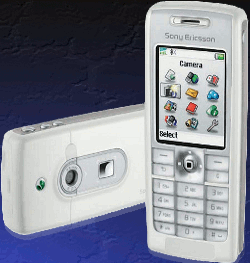GPRS
General packet radio service (GPRS) is a mobile packet data protocol used by 2G and 3G GSM cellphones.

Sony-Ericsson T630 GSM cellphone with color screen, camera, GPRS, Java and a WAP browser, a 2.5G cellular phone.
By aggregating GSM time slots into a single bearer, GPRS achieved data rates of 56-114 kbit/second with 32-40 kbit/s being typical.
Latency can be as much as 1 second since GPRS is priorotized lower than speech. Commonly called an always-on service, GPRS is actually a best-effort service with no guarantee of quality of service.
In addition to internet browsing, GPRS made a number of new services possible including: Multimedia messaging service (MMS), Push to talk (PTT), instant messaging, Internet applications via WAP and point-to-point services.
The multiple access methods used in GSM with GPRS are based on frequency division duplex and TDMA. During a GPRS session, multiple users are assigned the same pair of up-link and down-link frequencies.
Through time domain statistical multiplexing, several users share the same channel in a manner similar to the way several computers share the same network connection via a hub.
As long as multiple GPRS users are not simultaneously doing bandwidth intensive activities, the shared frequency channel appears to each user to be always on.
An enhanced version of GPRS was developed to move from 2.5G to 2.75G and was initially called EGPRS but was later named EDGE. EDGE is implemented as a backwards compatible add-on enhancement for 2.5G GSM/GPRS networks. EDGE is a superset to GPRS and can function on any network with GPRS deployed on it, provided the carrier has the necessary upgrade in place.




